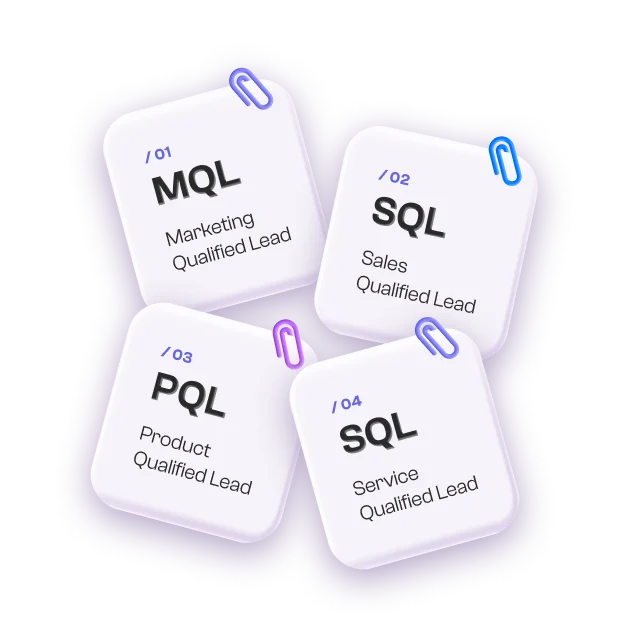The concept of inbound lead generation revolves around the creation and distribution of content that attracts visitors to your website and other online platforms. This can include blog posts, ebooks, infographics, videos, and other forms of content that are designed to provide value to your audience. The ultimate goal is to convert these visitors into leads by capturing their contact information through forms, landing pages, and calls-to-action.
Inbound lead generation strategies are diverse and can include various tactics such as SEO, social media marketing, email campaigns, and webinars. Each of these tactics aims to draw in potential customers who are already looking for solutions that your business offers. By understanding what inbound leads are and how they differ from outbound leads, you can tailor your marketing efforts to better meet the needs of your target audience and improve your chances of converting these leads into paying customers.
What Are Inbound Leads?
Inbound leads are potential customers who have demonstrated interest in your business through various actions, such as visiting your website, downloading a resource, filling out a form, or subscribing to your newsletter. These actions indicate that the prospect is already somewhat familiar with your brand and is seeking more information or solutions that you can provide.
Unlike outbound leads, which are generated through direct outreach efforts like cold calling or email blasts, inbound leads initiate the interaction, making them typically more receptive and engaged with your marketing efforts.
Understanding the inbound lead definition is crucial for any modern marketing strategy. Inbound leads, also referred to as inbound marketing leads, represent prospects who are drawn to your business through content and experiences that are valuable and relevant to their needs.
This approach contrasts sharply with outbound marketing, where the focus is on pushing messages to a broad audience, regardless of their interest level. Inbound lead generation is about attracting and engaging these prospects by addressing their specific pain points and interests.
Why Inbound Lead Generation Matters
Inbound lead generation is a critical component of a successful marketing strategy for several reasons. It aligns closely with how today’s buyers make purchasing decisions. Modern consumers are more informed and empowered than ever before, thanks to the wealth of information available online. They conduct extensive research, read reviews, and seek recommendations from peers and influencers before making a decision. This shift in behavior makes generating inbound leads more important than ever.
One of the key advantages of inbound lead generation is that it significantly reduces customer acquisition costs. By attracting prospects who are already interested in what you offer, you can minimize the resources spent on chasing uninterested leads. This efficiency can lead to a higher return on investment (ROI) for your marketing efforts.
Generating inbound leads also helps increase conversion rates. Since inbound leads have already expressed interest in your business, they are more likely to engage with your content and move further down the sales funnel. This pre-qualification means that your sales team can focus their efforts on leads that are more likely to convert, rather than wasting time on cold prospects.
Another important aspect of inbound lead generation is its ability to build trust and credibility with your audience. When prospects find your content helpful, informative, and relevant, they are more likely to view your business as an authority in your industry. This trust can be a significant factor in their decision-making process, making them more likely to choose your products or services over those of your competitors.
Inbound lead generation also supports long-term relationships with your customers. By consistently providing valuable content and engaging with your audience, you can nurture leads through the entire buyer’s journey and beyond. This ongoing engagement can lead to repeat business, referrals, and long-term customer loyalty.
Furthermore, inbound lead generation allows for better targeting and personalization. With inbound marketing, you can tailor your content and messaging to specific segments of your audience based on their interests, behavior, and stage in the buyer’s journey. This level of personalization can enhance the effectiveness of your marketing efforts and improve the overall customer experience.
Effective Strategies for Inbound Lead Generation
1. Content Marketing
Content marketing is the cornerstone of inbound lead generation. By creating valuable, informative, and engaging content, you can attract and retain a clearly defined audience. Types of content that work well include blog posts, ebooks, whitepapers, infographics, videos, podcasts, case studies, and newsletters. Each type of content serves a unique purpose and can appeal to different segments of your audience.
When developing a content marketing strategy, it’s essential to understand your target audience and their pain points. Conducting thorough market research and creating detailed buyer personas can help you identify the topics and formats that will resonate most with your prospects. Creating content that addresses these issues can help generate inbound leads and position your business as a solution provider.
A well-rounded content marketing strategy should include a mix of evergreen content and timely pieces that address current trends and issues in your industry. Evergreen content, such as how-to guides and best practices, remains relevant over time and can continue to attract inbound leads long after it’s published. Timely content, on the other hand, can help you capitalize on current events and trends to draw immediate attention to your brand.
In addition to creating high-quality content, it’s crucial to promote your content effectively. Utilize various channels, including your website, social media, email newsletters, and guest blogging opportunities, to reach a broader audience. Repurposing content into different formats, such as turning a blog post into a video or infographic, can also help you maximize your content’s reach and impact.
2. SEO Optimization
Search Engine Optimization is crucial for increasing your website’s visibility in search engine results pages (SERPs). Optimizing your content for relevant keywords can drive organic traffic to your site and generate inbound leads. SEO involves several key elements that work together to improve your site’s ranking and visibility.
Keyword research is the foundation of effective SEO. Identifying the terms and phrases your target audience is searching for allows you to create content that meets their needs and attracts organic traffic. Tools like Google Keyword Planner, SEMrush, and Ahrefs can help you find relevant keywords and analyze their search volume and competition.
On-page SEO involves optimizing individual pages on your website to rank higher in SERPs. This includes using keywords strategically in titles, headings, meta descriptions, and throughout the content. Ensuring your website is mobile-friendly, has fast loading times, and provides a good user experience are also critical components of on-page SEO.
Off-page SEO focuses on building your website’s authority and credibility through external factors, such as backlinks from reputable sites and social signals. Building relationships with other websites and influencers in your industry can help you earn high-quality backlinks, which can boost your search rankings.
Regularly updating your content and staying abreast of SEO best practices can help maintain and improve your search rankings. SEO is an ongoing process, and it’s essential to monitor your performance and adjust your strategy as needed to stay competitive.
3. Social Media Engagement
Social media platforms are powerful tools for engaging with your audience and generating inbound leads. By sharing valuable content, participating in conversations, and building a community around your brand, you can attract prospects who are interested in your products or services.
Effective social media engagement involves consistent posting, responding to comments and messages, and leveraging paid advertising options to reach a broader audience. Platforms like LinkedIn, Twitter, Facebook, Instagram, and even newer platforms like TikTok can be particularly effective for B2B inbound lead generation, depending on where your target audience spends their time.
To maximize your social media efforts, develop a content calendar that outlines what you’ll post and when. This helps ensure you’re consistently providing value to your audience and maintaining a regular presence on social media. Engaging with your audience by responding to comments, answering questions, and participating in relevant discussions can help build relationships and trust.
Leveraging paid advertising options, such as sponsored posts, promoted tweets, and LinkedIn ads, can help you reach a larger audience and generate more inbound leads. Targeting options on social media platforms allow you to reach specific demographics, interests, and behaviors, ensuring your ads are seen by the right people.
4. Email Marketing
Email marketing remains one of the most effective ways to generate inbound leads and nurture existing ones. By sending targeted, personalized emails, you can engage your audience and guide them through the buyer’s journey. Email marketing allows for direct communication with your prospects and customers, making it a powerful tool for building relationships and driving conversions.
To maximize the effectiveness of your email marketing campaigns, segment your email list based on factors such as demographics, behavior, and engagement level. Segmentation allows you to tailor your messages to different segments of your audience, ensuring your emails are relevant and valuable to each recipient.
Personalizing your emails with relevant content and offers can significantly increase open and conversion rates. Personalization can include using the recipient’s name, referencing their past interactions with your brand, and providing content that addresses their specific interests and needs.
Automating your email marketing campaigns can help you stay consistent and save time. Automation tools allow you to set up email sequences that are triggered by specific actions, such as downloading a resource or signing up for a webinar. This ensures timely follow-up and keeps your audience engaged throughout their journey.
5. Webinars and Live Events
Hosting webinars and live events can be an excellent way to generate inbound leads and demonstrate your expertise. These events provide an interactive platform where you can engage with prospects, answer their questions, and showcase your products or services. Webinars and live events allow you to connect with your audience in real-time, providing valuable insights and building relationships.
To attract attendees, promote your webinars and live events through various channels, such as email, social media, and your website. Offering valuable insights and actionable takeaways can help build trust and encourage participants to engage further with your business. Providing exclusive content or special offers to attendees can also incentivize sign-ups and participation.
During the event, focus on delivering high-quality content that addresses your audience’s pain points and provides practical solutions. Engaging with attendees through Q&A sessions, polls, and interactive features can enhance the experience and build a stronger connection.
Following up with attendees after the event is crucial for converting leads into customers. Send personalized follow-up emails that recap the event, provide additional resources, and encourage further engagement. This continued interaction can help nurture leads and move them closer to making a purchase.
How to Manage and Qualify Inbound Leads
1. Lead Scoring
Lead scoring is a method used to rank prospects based on their likelihood to convert into customers. By assigning scores to inbound leads based on their behavior and engagement with your content, you can prioritize follow-up efforts and focus on the most promising prospects. Effective lead scoring involves a combination of quantitative and qualitative factors to create a comprehensive picture of each lead’s potential value.
Factors to consider in lead scoring include website visits, content downloads, email opens, social media interactions, and engagement with other marketing materials. For instance, a lead who has visited multiple pages on your website, downloaded an ebook, and attended a webinar is likely more engaged and further along in the buyer’s journey than a lead who has only visited your homepage.
Other factors that can influence lead scoring include demographic information, such as job title, company size, industry, and geographic location. These attributes can help you determine how well a lead fits your ideal customer profile (ICP). Behavioral data, such as time spent on site, number of pages viewed, and frequency of interactions, can also provide valuable insights into a lead’s level of interest and readiness to buy.
Advanced lead scoring models may also incorporate predictive analytics and machine learning to identify patterns and trends that indicate a higher likelihood of conversion. By continuously analyzing and refining your lead scoring criteria, you can improve the accuracy and effectiveness of your lead qualification process.
2. CRM Integration
Integrating your inbound lead generation efforts with a Customer Relationship Management system can streamline the lead management process and enhance your ability to track, manage, and nurture leads effectively. A CRM system allows you to centralize all lead information in one place, making it easier to monitor lead activity and progress through the sales funnel.
Using a CRM system, you can segment leads based on various criteria, such as behavior, demographics, and engagement level. This segmentation enables you to tailor your follow-up efforts and marketing messages to each lead’s specific needs and preferences. For example, you can create targeted email campaigns for leads in different stages of the buyer’s journey or for those who have shown interest in specific products or services.
CRM systems also offer automation capabilities that can help you streamline and optimize your lead management process. For instance, you can set up automated workflows to trigger follow-up emails, assign tasks to sales representatives, and update lead statuses based on specific actions or behaviors. This automation ensures that no lead falls through the cracks and that your team can respond promptly and consistently to inbound leads.
In addition to improving efficiency, CRM integration provides valuable insights into your lead generation performance. By analyzing data from your CRM system, you can track key metrics such as lead conversion rates, response times, and sales pipeline velocity. These insights can help you identify areas for improvement and refine your inbound lead generation strategies to achieve better results.
3. Timely Follow-Up
The timing of your follow-up is critical in converting inbound leads into customers. Research shows that responding to leads within an hour can significantly increase the chances of conversion. A timely follow-up demonstrates your responsiveness and commitment to meeting your prospects’ needs, which can build trust and strengthen the relationship.
Automating follow-up tasks using email sequences and CRM workflows can help ensure that no lead falls through the cracks. For example, you can set up automated email sequences that are triggered by specific actions, such as downloading a resource or filling out a contact form. These sequences can provide relevant information and resources to keep the lead engaged and moving through the sales funnel.
Personalizing your follow-up messages based on the lead’s behavior and engagement can further enhance your chances of success. For instance, if a lead has downloaded a whitepaper on a particular topic, you can send a follow-up email that offers additional resources or invites them to a related webinar. This personalized approach shows that you understand their interests and are committed to providing value.
In addition to email, consider using other communication channels for follow-up, such as phone calls, social media messages, and direct mail. Different leads may prefer different channels, so offering multiple options can increase your chances of connecting with them. For high-value leads, a multi-touch follow-up strategy that combines several channels can be particularly effective.
Monitoring and analyzing your follow-up efforts is also essential for optimizing your lead management process. By tracking response rates, conversion rates, and other key metrics, you can identify which follow-up strategies are most effective and make data-driven adjustments to improve your results.
Converting Inbound Leads into Customers
1. Personalized Outreach
Personalized outreach is key to converting inbound leads into customers. By tailoring your communication to address the specific needs and interests of each lead, you can build a stronger connection and increase the likelihood of conversion. Personalized outreach involves using data and insights gathered from various touchpoints to create customized messages that resonate with your leads on a personal level.
Using data from your CRM system, you can segment leads based on their behavior, preferences, and engagement history. This segmentation allows you to craft personalized messages that speak directly to each lead’s pain points and goals. For example, if a lead has shown interest in a specific product feature, you can highlight that feature in your communication and explain how it can solve their particular challenge.
Personalization goes beyond just addressing leads by their name. It involves understanding their unique circumstances and providing relevant information that meets their needs. This can include referencing past interactions, acknowledging their position in the buyer’s journey, and offering tailored solutions that align with their business objectives. By demonstrating that you understand their challenges and are committed to helping them succeed, you can build trust and differentiate your business from competitors.
In addition to personalized emails, consider using other communication channels for outreach, such as phone calls, social media messages, and direct mail. Each channel offers an opportunity to connect with leads in a personalized way and reinforce your commitment to providing value. For high-value leads, a multi-touch approach that combines several channels can be particularly effective in building a strong relationship and driving conversion.
2. Offering Solutions
When engaging with inbound leads, focus on offering solutions that address their challenges and pain points. Rather than simply promoting your products or services, position yourself as a partner who can help them achieve their goals. This solution-oriented approach shifts the conversation from a sales pitch to a collaborative problem-solving discussion, which can be more appealing to leads.
Providing case studies, testimonials, and success stories can help illustrate the value of your solutions and build credibility with your prospects. These real-life examples demonstrate how your business has helped similar clients overcome challenges and achieve success. By showcasing tangible results and the positive impact of your solutions, you can increase trust and encourage leads to take the next step.
In your communications, emphasize the benefits and outcomes of your solutions rather than just the features. Explain how your product or service can improve their operations, increase efficiency, save costs, or drive revenue growth. Use specific metrics and data to quantify the benefits and make your value proposition more compelling.
Additionally, offering personalized demos, free trials, or consultations can give leads a firsthand experience of your solution and how it can meet their needs. These hands-on opportunities allow leads to see the value for themselves and build confidence in their decision to move forward with your business.
3. Building Relationships
Building strong relationships with your inbound leads is essential for long-term success. By consistently providing value and engaging with leads throughout their buyer’s journey, you can foster trust and loyalty. Relationship-building involves ongoing communication, support, and nurturing to ensure that leads feel valued and supported at every stage.
Regularly communicating with leads through various channels, such as email, social media, and phone calls, can help maintain engagement and keep your business top of mind. Sharing valuable content, industry insights, and updates about your products or services can demonstrate your expertise and reinforce your commitment to helping them succeed.
Offering ongoing support and resources can further strengthen relationships and increase the likelihood of conversion. This can include providing access to educational materials, hosting webinars and workshops, and offering personalized advice and guidance. By positioning yourself as a trusted advisor and resource, you can build deeper connections with your leads and enhance their experience with your brand.
In addition to proactive communication, it’s important to listen to your leads and understand their evolving needs and challenges. Soliciting feedback, conducting surveys, and engaging in meaningful conversations can provide valuable insights that inform your approach and help you better serve your leads.
Finally, showing appreciation and recognizing your leads’ achievements can go a long way in building strong relationships. Celebrating their successes, acknowledging milestones, and offering exclusive perks or rewards can make leads feel valued and appreciated, fostering loyalty and long-term engagement.
Real-Life Examples of Successful Inbound Lead Generation
HubSpot
HubSpot is a prime example of successful inbound lead generation. Through their comprehensive content marketing strategy, including blog posts, ebooks, webinars, and videos, they attract and engage a large audience. Their use of SEO and social media further amplifies their reach, generating a steady stream of inbound leads.
HubSpot’s content covers a wide range of topics relevant to marketing, sales, and customer service, ensuring that they address the needs and interests of their diverse audience. Additionally, HubSpot offers free tools and resources, such as their CRM and marketing software, which attract users and convert them into leads.
Moz
Moz leverages its expertise in SEO to generate inbound leads through valuable content and tools. Their blog, community forums, and educational resources attract a loyal following of marketers and business owners, positioning Moz as a trusted authority in the industry.
Moz’s comprehensive guides, research reports, and webinars provide actionable insights and best practices, helping their audience improve their SEO efforts. The Moz community also plays a significant role in their inbound lead generation strategy, fostering engagement and collaboration among users.
Salesforce
Salesforce effectively generates inbound leads through a combination of content marketing, webinars, and social media engagement. By providing valuable insights and resources, they attract prospects interested in CRM solutions and nurture them through personalized follow-up and support. Salesforce’s content includes blog posts, case studies, whitepapers, and videos that showcase the benefits and features of their CRM platform. Their webinars and live events offer opportunities for prospects to learn from industry experts and see the platform in action, further driving engagement and interest.
Buffer
Buffer’s inbound lead generation strategy focuses on content marketing and social media engagement. By sharing valuable content and insights on social media management, they attract a large audience of marketers and business owners. Buffer’s transparent and customer-centric approach further strengthens their relationship with leads.
They regularly publish blog posts, case studies, and research reports that provide practical tips and strategies for effective social media marketing. Buffer’s active presence on social media platforms also helps them engage with their audience and build a community around their brand.
Neil Patel
Digital marketing expert Neil Patel generates inbound leads through his extensive content marketing efforts. His blog, podcast, and video content provide valuable insights and actionable tips, attracting a large audience of marketers and business owners. Neil’s personal brand and expertise further enhance trust and credibility.
He consistently produces high-quality content that addresses common challenges and questions in digital marketing, helping his audience improve their skills and achieve their goals. Neil also offers free tools and resources, such as Ubersuggest, which attract users and convert them into leads.
LinkedIn Learning
LinkedIn Learning generates inbound leads by offering a vast library of professional development courses. Their content covers a wide range of topics, from technical skills to soft skills, attracting professionals from various industries.
LinkedIn Learning’s integration with the LinkedIn platform allows them to leverage user data to recommend relevant courses, increasing engagement and conversion rates. Their free trial and personalized course recommendations make it easy for prospects to experience the value of their platform and become paying subscribers.
Conclusion
Effective inbound lead generation is crucial for attracting high-quality prospects and converting them into loyal customers. By employing a combination of content marketing, SEO optimization, social media engagement, email marketing, and webinars, companies can build trust and credibility with their audience.
By focusing on personalized outreach, offering tailored solutions, and building strong relationships, you can effectively manage and qualify inbound leads. Utilizing tools like CRM systems and lead scoring can streamline your lead management process and ensure timely follow-ups. The key to success lies in consistently providing value and engaging with your leads throughout their buyer’s journey.
If you’re looking to enhance your inbound lead generation efforts, consider learning from these inbound leads examples and integrating their best practices into your strategy. With the right approach, your business can attract more high-quality inbound leads and convert them into satisfied customers.
Ready to take your inbound lead generation to the next level? Contact us today to learn how our proven strategies can help you attract and convert more inbound leads. Our team of experts is here to support you in implementing a comprehensive inbound lead generation strategy tailored to your business needs.




